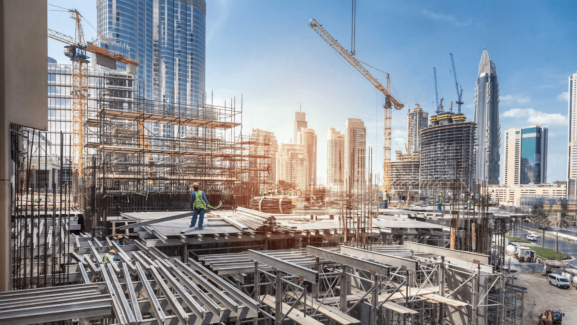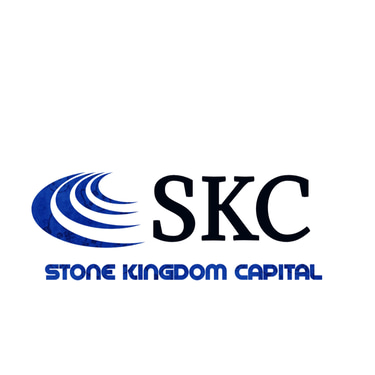COMMODITIES AND REAL ESTATE: SURPRISING CONNECTIONS
When people think of commodities and real estate, they often picture them as two very different worlds. Commodities bring to mind oil, gold, or agricultural products, while real estate makes us think of houses, apartments, and commercial buildings. But beneath the surface, the two asset classes are deeply connected and for investors, understanding these connections can unlock new opportunities.
Martha Saunders
8/2/20253 min read


When you think of investment portfolios, commodities and real estate often sit in separate boxes. One brings to images of volatile trading pits, oil rigs, and grain silos. The other evokes steady, tangible assets like apartment buildings and commercial offices.
But what if we told you these two asset classes are deeply intertwined? Beneath the surface, a complex dance between raw materials and property values is constantly playing out. For savvy investors and business owners, understanding these connections isn’t just academic, it’s a strategic advantage.
Let’s dig into the four most powerful links between commodities and real estate.
The Construction Cost Link: When Copper is King
This is the most direct connection. Real estate is literally built from commodities.
Every skyscraper, shopping mall, and single-family home is a physical assembly of industrial and agricultural commodities.
Steel and rebar form the skeleton.
Copper is the lifeblood of electrical wiring.
Lumber, plywood, and other timber products frame the structure.
Aluminum is used in windows and facades.
Crude oil is refined into asphalt for roofing and paving, and into plastics for piping and insulation.
The Investment Impact: When commodity prices surge, construction costs skyrocket. This has a double-edged effect on real estate:
It increases the value of existing properties, as the replacement cost to build an equivalent new one becomes prohibitively high.
It can stifle new development, reduce future supply and create upward pressure on rents and prices for existing buildings.
An investor watching lumber or copper futures can gain valuable insights into the health and future direction of the construction and real estate development sectors.
The Inflation Hedge Link: Two Shields Against the Same Storm
Both commodities and real estate are famously known as hard assets and are classic hedges against inflation.
When central banks print money and inflation rise, the value of paper currency erodes. Investors flock to assets with intrinsic value.
Commodities: Their prices often rise with inflation, as they are the raw ingredients for goods and services.
Real Estate: Landlords can raise rents in an inflationary environment, and property values tend to appreciate as the dollar's purchasing power declines.
For a diversified portfolio, holding both can provide a robust defense. They don't always move in lockstep, but they are both fighting the same battle against currency devaluation.
The Geospatial & Economic Link: Location, Location…..Extraction?
This is where the connection gets fascinating. Real estate values are directly created and destroyed by commodity booms and busts.
The Boomtown Effect: Think of a new shale oil discovery in West Texas or a lithium mine in Nevada. Suddenly, there is a massive influx of workers and capital. Demand for housing, retail space, and offices explodes, sending local real estate prices soaring. This creates immense opportunities for developers and landlords.
The Ghost Town Effect: Conversely, when a mine closes or oil prices collapse, the local economy withers. Jobs disappear, people move away, and real estate values plummet.
This link is a powerful reminder that real estate is not a monolithic market—it’s a collection of hyper-local markets, each with its own economic driver, which is often a specific commodity.
The Agricultural Real Estate Link: The Land is the Commodity
For farmland, the connection is absolute. The real estate is the means of commodity production.
The value of a piece of farmland is intrinsically tied to the price of the commodities it produces—whether it's corn, wheat, soybeans, almonds, or grapes.
Rising corn prices make Iowa farmland more valuable.
Soaring almond demand drives up land prices in California's Central Valley.
Investing in agricultural real estate is a way to gain direct, leveraged exposure to soft commodities without ever touching a futures contract. You're betting on the land's ability to produce valuable outputs for decades to come.
The Modern Twist: The Green Energy Transition
Today, a new, powerful connection is emerging. The global push for decarbonization is creating unprecedented demand for specific "transition commodities" like copper, lithium, cobalt, and nickel. These are essential for EVs, batteries, and renewable energy infrastructure.
This is reshaping real estate in two ways:
It's creating new "boomtowns" near mines and battery gigafactories.
It's fundamentally changing the value of industrial real estate, with warehouses and logistics centers now being evaluated for their suitability for solar panel installations and EV charging hubs.
The Bottom Line for Investors
Viewing commodities and real estate as separate silos is a missed opportunity. They are two sides of the same hard-asset coin. A rise in lumber prices isn't just a chart for a trader; it's a signal for a real estate developer. A boom in copper isn't just a mining story; it's a regional real estate story.
By understanding these surprising connections, you can make more informed decisions, spot emerging trends before they become obvious, and build a more resilient and insightful investment strategy. The next time you look at a property, ask yourself: what commodities built it, power it, and drive the economy around it? The answers might just reveal your next big opportunity.
TRADING
Expertise in commodities trading, advisory, and procurement management services.
CONTACT
Churchill Executive Towers, Office 900 Business Bay, Dubai, UAE
801 Brickell Ave Ste 811 Miami, FL 33131
Dubai - 971 55 117 7276
Miami - 305 461 0016 info@stonekingdomcap.com
